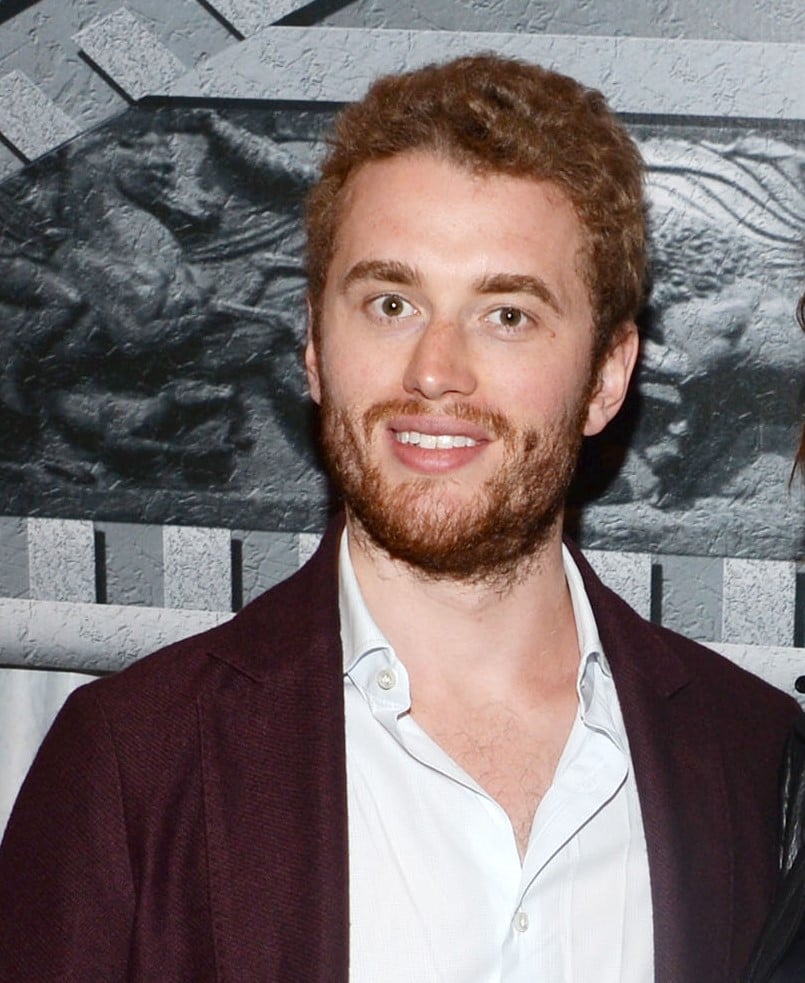Crime
Inigo Philbrick’s Lawyers Make a Last-Ditch Appeal for Leniency, With Testimonials From Gilbert & George and a Camp Counselor
Seventeen friends and family members have written letters of support on the incarcerated dealer's behalf.

Seventeen friends and family members have written letters of support on the incarcerated dealer's behalf.

Eileen Kinsella

Attorneys for art dealer Inigo Philbrick, who has been behind bars for nearly two years since he was arrested in June 2020 on an island in the South Pacific, have asked the court for leniency ahead of his planned sentencing.
Philbrick, who pleaded guilty to one count of wire fraud last November, was due to be sentenced in New York this week. (The date had been pushed back from mid-March.) The hearing has now been delayed again and is scheduled for early May.
The former art-market wunderkind faces a maximum of 20 years in prison. He has also agreed to turn over more than $86 million that is said to be traceable to the fraud, and to forfeit paintings, including one by Christopher Wool and one by Wade Guyton. Finally, Philbrick will make restitution to his victims in an amount to be determined by the judge.
Late last month, attorney Jeffrey Lichtman supplied 50 pages of material to support his request for a sentence that is “sufficient but not greater than necessary.” The cache included 17 letters from Philbrick associates ranging to a former camp counselor to his immediate family, as well as his fiancée, Victoria Baker-Harber, her family, and others attesting to his good character. There is even a letter from star contemporary-art duo Gilbert & George, who worked with Philbrick when he was an intern at London’s White Cube Gallery, where he got his start in the art world in 2005.
Gilbert & George wrote that from the first day they met him, they realized he was “a very talented, extraordinary charming, honest, and decent young person.” Another letter, from an ex-cellmate, details how Philbrick helped “de-escalate” volatile prison situations and helped other inmates to write letters for their own defenses.
Philbrick’s lawyers point out that he “immediately accepted responsibility for his criminal conduct,” including meeting with law enforcement following his arrest and providing detailed information “concerning his and other frauds in the art market.”
Second, the filing argues that although the restitution obligation is still being calculated by the U.S. government, “the actual harm suffered by the victims in this case is likely far less than the loss amount” used for determining the sentencing guidelines.
At the time of his guilty plea last November, Philbrick agreed to turn over more than $86 million in fraudulently obtained funds. The filing asserts that not all of the money in these transactions “evaporated,” adding that with respect to the location and ownership of some 29 works of art in question, there is “pending litigation in the U.S. and abroad” that could resolve complicated issues of ownership.
Lichtman also cited the “extraordinarily harsh conditions at the Metropolitan Detention Center” where Philbrick has been held throughout the pandemic, and lastly, a review of his “many good deeds,” concluding that the “prospects for his rehabilitation are very good.”
The filing also outlines what it describes as a tumultuous family history for Philbrick, including his parents’ divorce while he was a teenager, which resulted in his feeling responsible for providing for his mother and sister from a young age. The court papers are also frank about Philbrick’s use of drugs and alcohol, starting at a young age and continuing into 30s, which the defense argues contributed to his actions.
According to the papers, Philbrick’s substance abuse intensified as he entered London’s art world, which he acknowledged was a “hard-drinking industry,” and one in which he had a “reputation for hard drinking.” Specifically, the filing says, “he would begin drinking alcohol at lunch and continued to do so throughout the day, often using illegal drugs as well,” adding that this was “how art deals are done.”
In addition to enumerating these potentially mitigating factors, Lichtman also referred to other recent art-fraud cases, including those involving dealer Ezra Chowaiki, who also pleaded guilty to wire fraud in 2018, and Glafira Rosales, the only person in the Knoedler Gallery forgery scandal to serve jail time.
Lichtman wrote that in February 2017, Rosales was sentenced to time served—amounting to just three months’ imprisonment—for selling 60 previously unknown works purportedly by such artists as Willem de Kooning, Jackson Pollock, and Robert Motherwell, all later determined to be forgeries.
Chowaiki was sentenced in September 2018 to 18 months’ imprisonment—a significant deviation from sentencing guidelines of 51 to 63 months. In all, the government indicated that Chowaiki’s fraud resulted in a loss of roughly $10 million and involved “dozens of works of art.” Lichtman noted: “Without a cooperation agreement, Chowaiki received a sentence that was a mere fraction of his guidelines range.”
Judd Grossman, the attorney who is representing several people in civil lawsuits against Philbrick for alleged losses of millions in artwork and money, told Artnet News: “Citing other recent high-profile art-fraud prosecutions, where the court imposed sentences well below the guidelines range, Philbrick’s lawyers have asked for a lenient sentence. The court here has the opportunity to reverse that trend and send a strong message to the art world that fraud will not be tolerated.”